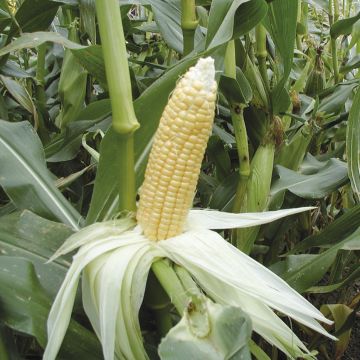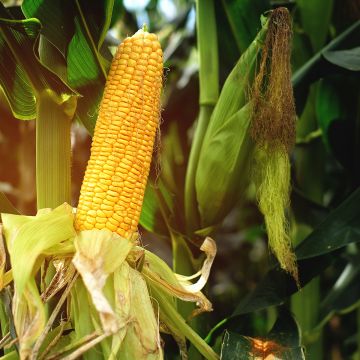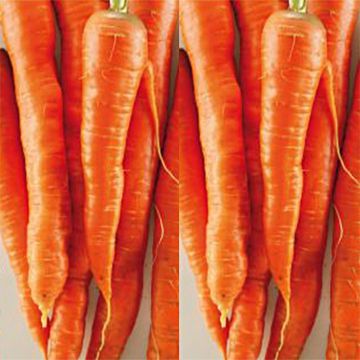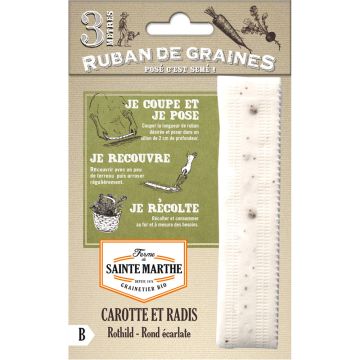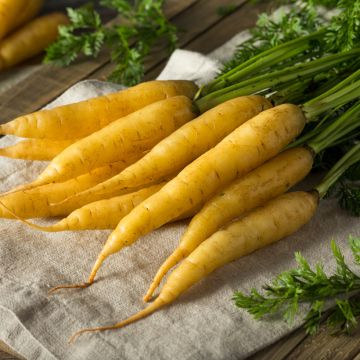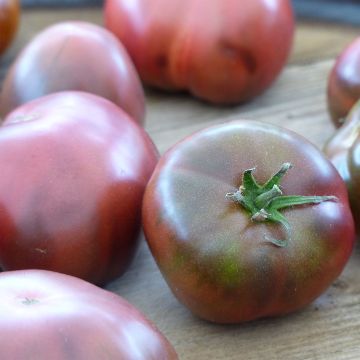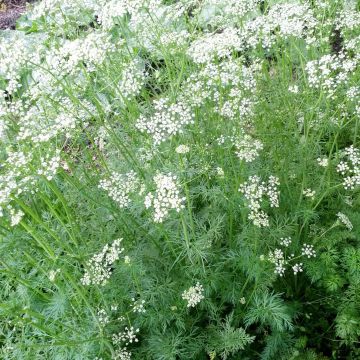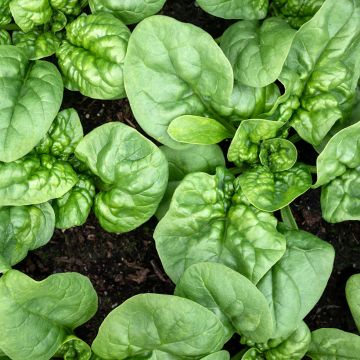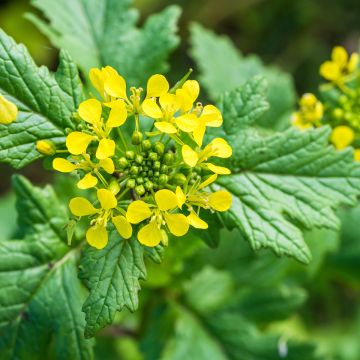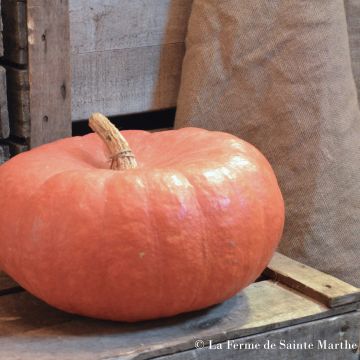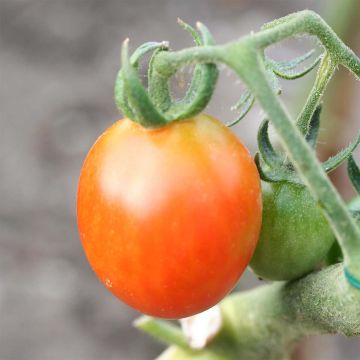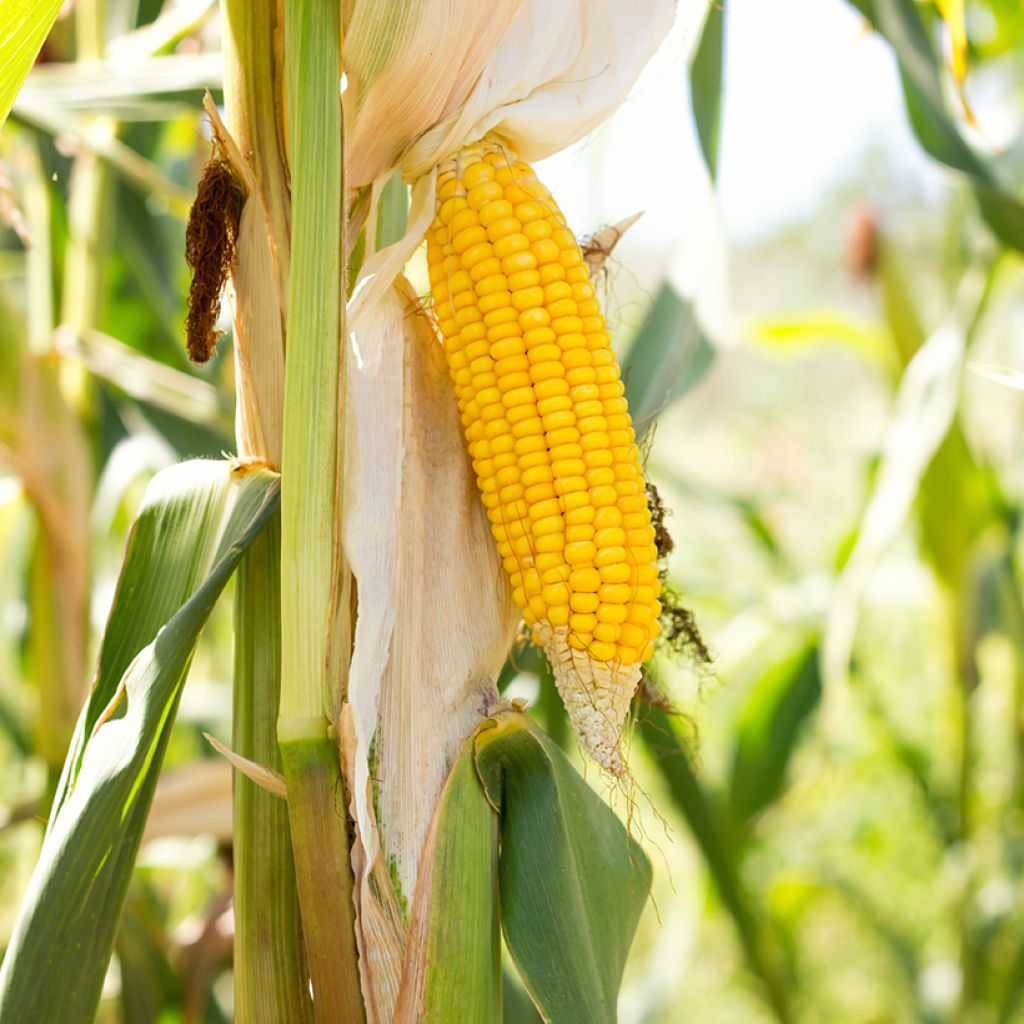

Zea mays Tasty sweet Trophy F1
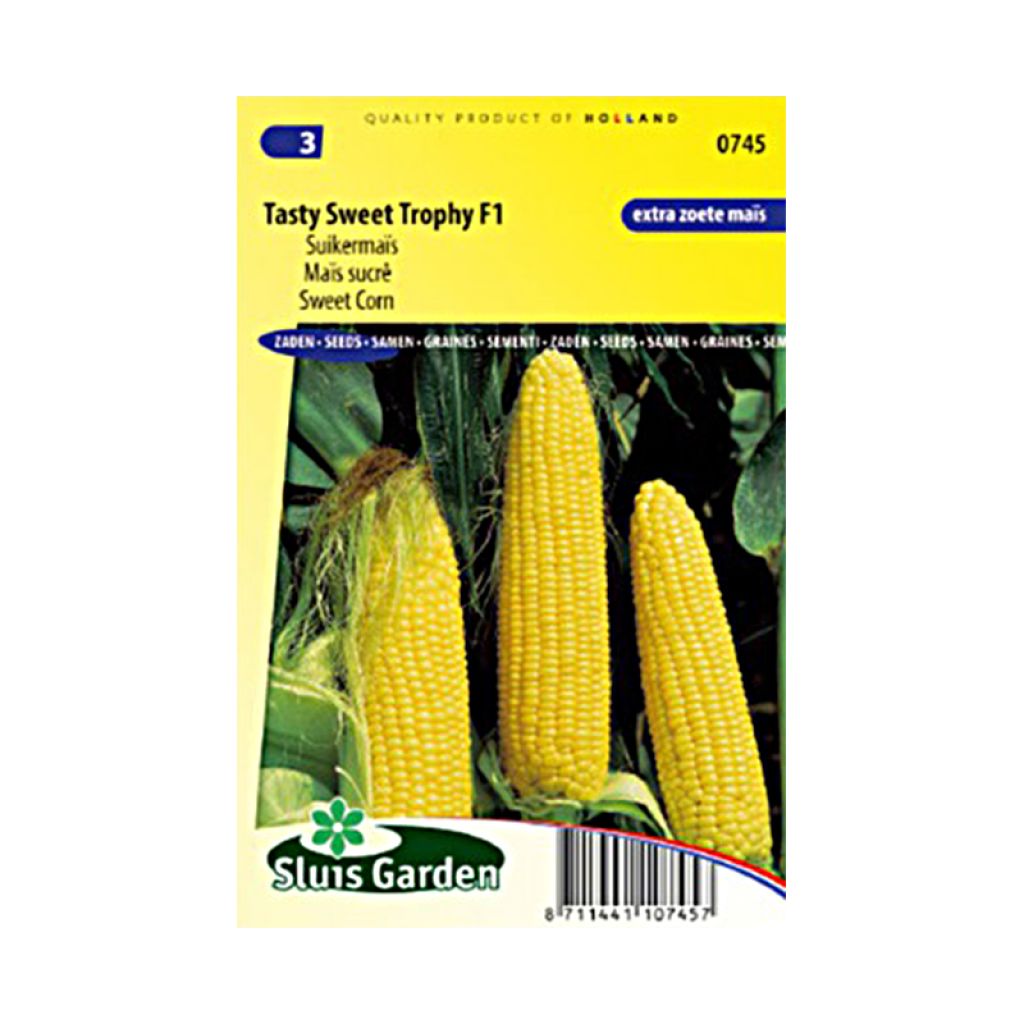

Zea mays Tasty sweet Trophy F1
Zea mays Tasty sweet Trophy F1
Zea mays Tasty sweet Trophy F1
Maize, Corn
The seeds have germinated well, and for now, the plants are beautiful and growing well. I haven't harvested or tasted them yet.
Nathalie J., 04/08/2019
Why not try an alternative variety in stock?
View all →This plant carries a 6 months recovery warranty
More information
We guarantee the quality of our plants for a full growing cycle, and will replace at our expense any plant that fails to recover under normal climatic and planting conditions.
Seed-only orders are dispatched by sealed envelope. The delivery charge for seed-only orders is €3.90.
Description
The Tasty sweet trophy F1 sweetcorn is an early variety that has good cold resistance. The cobs are yellow, 20 cm (8in) long, sweet and tasty, delicious raw or cooked. Sowing under cover is done in April/May and in open ground in May/June. Harvesting takes place from August to September.
Sweetcorn likes deep, light, moist and humus-rich soils. Sweetcorn prefers sunny locations and requires warmth. When planted along the edges of vegetable gardens, they can help delineate growing areas and provide shade for vegetables that need it (lettuce, cabbage, etc.).
Sweetcorn is a natural variant of maize. It has many nutritional benefits: low in fats, fewer calories, but higher in protein than rice, and five times richer in fiber. Its glycemic index is moderate. Additionally, it contains numerous B-group vitamins and vitamin C. It also contains a variety of minerals and trace elements.
Harvesting: Sweetcorn is harvested 80 to 120 days after sowing depending on the heat and watering, when the silks start to turn brown. The kernels should be well developed but still tender. To determine if they are ripe, take a few from an ear and crush them: they should be slightly milky. If harvested too late, the sugar turns into starch and the skin becomes tough.
Storage: After harvesting, remove the green husk that surrounds the cob and consume it quickly. To store them for longer, cook them and then preserve them in jars or freeze them.
Gardener's tip: Traditionally, Native Americans cultivate maize in association with climbing beans and squash. These three plants benefit each other: nitrogen nutrition from the beans, support from the maize, and ground cover from the squash leaves. First, sow the maize. When it reaches 10 cm (4in) in height, sow two bean seeds and two squash seeds around the maize.
Report an error about the product description
Harvest
Plant habit
Foliage
Botanical data
Zea
mays
Tasty sweet Trophy F1
Poacées
Maize, Corn
Cultivar or hybrid
Annual
Other Sweetcorn seeds
Planting and care
Sowing sweet corn:
Sow the corn in full sun after soaking the seeds in warm water for 12 hours. In the garden, sow from April to June in well-warmed soil (at least 12°C (53.6°F)). You can install a tunnel over early sowings until the temperatures warm up enough. You can start sowing in pots, indoors, as early as March, and plant them in May-June in the garden. Remember to stagger your sowings to spread out the production period. Only sow one variety at a time, or two varieties with staggered flowering: corn hybridizes very easily and you would not harvest the variety you sowed. If your garden is less than 200 m (656ft) from a cornfield, you will need to protect your crop during flowering.
To sow in rows, dig furrows 3 cm (1in) deep, 70 cm (28in) apart. Sow thinly. After germination, thin to 25-30 cm (10-12in) along the row. If you are only sowing a small number of plants, sow them in a square rather than one or two long rows, pollination will be better ensured.
To sow indoors, place 2-3 seeds per pot in seed compost, mixed with a little compost. Then plant out the strongest seedling.
Cultivating sweet corn:
Corn likes rich soils: add manure or compost when preparing the soil, in the previous autumn, to enrich the area intended for sowing. The roots are shallow, so hoeing should be very superficial. To promote anchoring, hill up the corn when it reaches 20 cm (8in), then 40 cm (16in) in height. Water regularly if it does not rain (once a week), and cover the soil with mulch to retain moisture (grass clippings, straw...).
To facilitate pollination, when the female flowers (located two-thirds up the stem) turn beige, shake the plant. This way, the pollen from the male flower (located at the top of the stem) will fall onto the female flowers.
The corn borer caterpillar, a destructive moth of corn, sometimes burrows into the stems, causing them to break. As a preventive measure, crush the crop waste before using it (compost or mulch). Practice proper crop rotation by not growing corn in the same plot for 3 or 4 years. In case of severe infestation, you can spray a solution of Bacillus thuringiensis.
Seedlings
Care
Intended location
-
, onOrder confirmed
Reply from on Promesse de fleurs
Vegetable seeds
Haven't found what you were looking for?
Hardiness is the lowest winter temperature a plant can endure without suffering serious damage or even dying. However, hardiness is affected by location (a sheltered area, such as a patio), protection (winter cover) and soil type (hardiness is improved by well-drained soil).

Photo Sharing Terms & Conditions
In order to encourage gardeners to interact and share their experiences, Promesse de fleurs offers various media enabling content to be uploaded onto its Site - in particular via the ‘Photo sharing’ module.
The User agrees to refrain from:
- Posting any content that is illegal, prejudicial, insulting, racist, inciteful to hatred, revisionist, contrary to public decency, that infringes on privacy or on the privacy rights of third parties, in particular the publicity rights of persons and goods, intellectual property rights, or the right to privacy.
- Submitting content on behalf of a third party;
- Impersonate the identity of a third party and/or publish any personal information about a third party;
In general, the User undertakes to refrain from any unethical behaviour.
All Content (in particular text, comments, files, images, photos, videos, creative works, etc.), which may be subject to property or intellectual property rights, image or other private rights, shall remain the property of the User, subject to the limited rights granted by the terms of the licence granted by Promesse de fleurs as stated below. Users are at liberty to publish or not to publish such Content on the Site, notably via the ‘Photo Sharing’ facility, and accept that this Content shall be made public and freely accessible, notably on the Internet.
Users further acknowledge, undertake to have ,and guarantee that they hold all necessary rights and permissions to publish such material on the Site, in particular with regard to the legislation in force pertaining to any privacy, property, intellectual property, image, or contractual rights, or rights of any other nature. By publishing such Content on the Site, Users acknowledge accepting full liability as publishers of the Content within the meaning of the law, and grant Promesse de fleurs, free of charge, an inclusive, worldwide licence for the said Content for the entire duration of its publication, including all reproduction, representation, up/downloading, displaying, performing, transmission, and storage rights.
Users also grant permission for their name to be linked to the Content and accept that this link may not always be made available.
By engaging in posting material, Users consent to their Content becoming automatically accessible on the Internet, in particular on other sites and/or blogs and/or web pages of the Promesse de fleurs site, including in particular social pages and the Promesse de fleurs catalogue.
Users may secure the removal of entrusted content free of charge by issuing a simple request via our contact form.
The flowering period indicated on our website applies to countries and regions located in USDA zone 8 (France, the United Kingdom, Ireland, the Netherlands, etc.)
It will vary according to where you live:
- In zones 9 to 10 (Italy, Spain, Greece, etc.), flowering will occur about 2 to 4 weeks earlier.
- In zones 6 to 7 (Germany, Poland, Slovenia, and lower mountainous regions), flowering will be delayed by 2 to 3 weeks.
- In zone 5 (Central Europe, Scandinavia), blooming will be delayed by 3 to 5 weeks.
In temperate climates, pruning of spring-flowering shrubs (forsythia, spireas, etc.) should be done just after flowering.
Pruning of summer-flowering shrubs (Indian Lilac, Perovskia, etc.) can be done in winter or spring.
In cold regions as well as with frost-sensitive plants, avoid pruning too early when severe frosts may still occur.
The planting period indicated on our website applies to countries and regions located in USDA zone 8 (France, United Kingdom, Ireland, Netherlands).
It will vary according to where you live:
- In Mediterranean zones (Marseille, Madrid, Milan, etc.), autumn and winter are the best planting periods.
- In continental zones (Strasbourg, Munich, Vienna, etc.), delay planting by 2 to 3 weeks in spring and bring it forward by 2 to 4 weeks in autumn.
- In mountainous regions (the Alps, Pyrenees, Carpathians, etc.), it is best to plant in late spring (May-June) or late summer (August-September).
The harvesting period indicated on our website applies to countries and regions in USDA zone 8 (France, England, Ireland, the Netherlands).
In colder areas (Scandinavia, Poland, Austria...) fruit and vegetable harvests are likely to be delayed by 3-4 weeks.
In warmer areas (Italy, Spain, Greece, etc.), harvesting will probably take place earlier, depending on weather conditions.
The sowing periods indicated on our website apply to countries and regions within USDA Zone 8 (France, UK, Ireland, Netherlands).
In colder areas (Scandinavia, Poland, Austria...), delay any outdoor sowing by 3-4 weeks, or sow under glass.
In warmer climes (Italy, Spain, Greece, etc.), bring outdoor sowing forward by a few weeks.

































